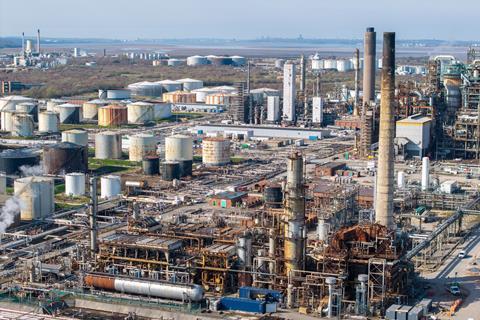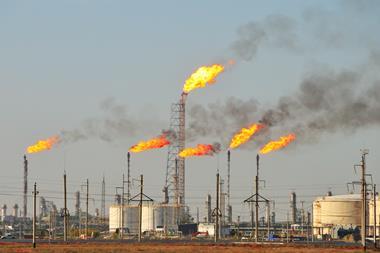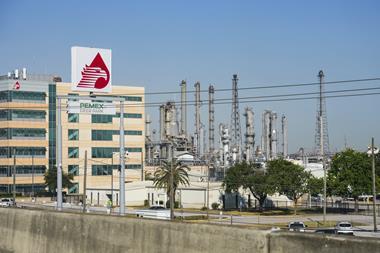Can plants adapt to be compatible with a lower-carbon environment?
Once Petroineos’s Grangemouth refinery closes this year, the UK will have five working oil refineries, down from a peak of 18 in the 1970s. As demand for fossil-derived fuels declines, and competition from abroad intensifies, that number seems set to fall further. The surviving plants will likely be those that are already moving toward cleaner, more efficient, and more sustainable operation. This feature article from Andy Extance explores the possible future for refineries during the energy transition and beyond.
Phillips 66’s Humber refinery, for example, was fortuitously designed to produce graphite from heavy oils. Demand for graphite coke in battery electrodes means it has dramatically increased in value. That brings new revenue that has supported transition-oriented side projects at the refinery, for example to convert used vegetable oil into around 50 million litres/year of bio-derived sustainable aviation fuel (about 0.4% of its petroleum processing capacity).

Across the country at Stanlow, Essar Energy Transition (EET) Fuels has commissioned a new furnace that could eventually be fired with hydrogen, aiming to reduce the plant’s operating carbon emissions – although for now it will burn hydrocarbon gases produced as part of the refinery’s regular operations. Refineries produce (and use) most of the UK’s hydrogen (from reforming hydrocarbons) – if Stanlow can capture the CO2 emissions from hydrogen production, and heat its processes with that hydrogen, it would drastically lower the plant’s overall carbon footprint.
There is an argument that heat is perhaps not the best use of low-carbon hydrogen, given the demand from processes like fertiliser production, which chemically require hydrogen and therefore cannot be decarbonised any other way. Heat for many processes can be generated directly and more efficiently from electricity – as demonstrated in a petrochemical context at BASF’s pilot electric crackers in Ludwigshafen, Germany.
However, that technology is still in its infancy, so it’s relatively easy to see the attraction (from a refiner’s point of view) of enabling a potential switch to hydrogen as a heat source, while maintaining the ability to burn hydrocarbons. It requires relatively small modifications to existing plant infrastructure and employs fuels that the refiner already has ready access to, without forcing commitment to a definitive decarbonisation timeline.
This route allows some flexibility to both exert and respond to economic and political influences. That will be key to maintaining incentives for investment, since hydrogen-fuelled heating will always be more expensive than burning hydrocarbons directly. Increasing carbon emission prices (and taxing the emissions embodied in competing imports) provides more justification to invest in further efficiency improvements and emissions-lowering technology, as well as ensuring that it actually gets used to its full potential.

















No comments yet